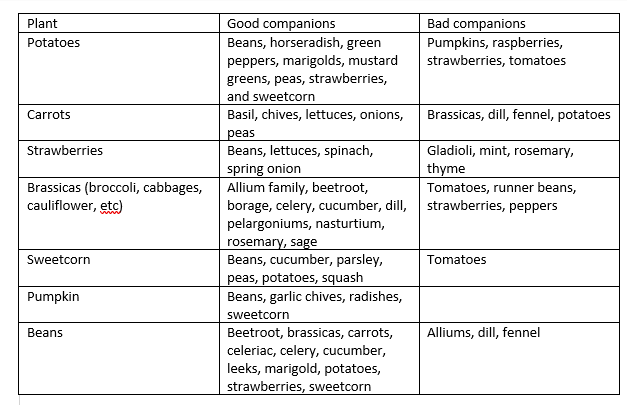This ultimate companion planting guide will help you grow fantastic vegetables while saving money and using less harmful to the planet insecticides and herbicides.
You’ve protected your garden beautifully through the winter and now spring will be here before you know it. You might be thinking about planting your vegetables when the weather starts warming up. Companion plants can be massively beneficial to a thriving vegetable patch. Read this guide to find out more about what companion planting is and how it can boost your bounty and save you money on harmful pesticides and synthetic fertilizers.
Companion planting is an age-old practice of planting different plants together to help them grow better, yield more fruit and be more pest-resistant. For the thrifty at heart, using companion planting techniques can help you save a great deal of money. Not only will you be harvesting your own wonderfully healthful fruit and vegetables, but you will also be able to use fewer pesticides, herbicides, and synthetic fertilizers. Perfect if you are keen on the idea of organic gardening.
The principles of companion planting involve planting certain plants near each other so that they can benefit from each other in some way. It may be for pest control, shade, nutrients, or attracting beneficial insects. Here are a few different ways in which companion planting works.
Some plants can benefit others by adding certain elements to the soil. For example, nitrogen-fixing plants such as beans, peas, and other legumes, fix nitrogen in the soil for other plants to use. Nitrogen, aka the leaf maker, is a micronutrient that forms part of chlorophyll, which lends leaves their verdant green color. Nitrogen is also responsible for the growth of shoots and leaves. Vegetables that do particularly well with extra nitrogen are your leafy greens such as lettuces, cabbages, and chards.
Plants that are prolific flower bearers such as lavender, borage, and scented pelargoniums attract bees and butterflies to your vegetable patch. These pollinating insects are vital for the pollination of your vegetable flowers.
Planting strongly scented onions and garlic near your other plants can help to confuse insects and make it difficult for them to find their host plant of choice.
Trap cropping involves planting plants that lure destructive insects away from your edible fruits and vegetables. Examples of excellent trap crops are plants like nasturtiums (they lure cabbage moth caterpillars away from your brassicas and keep aphids and white flies away from your tomatoes), marigolds (snails love them), chervil (slugs love it).
Some plants can help to improve the flavor of their neighbor’s fruit. Alliums such as leeks and spring onions planted near strawberries will improve their sweetness and keep snails at bay. Similarly, chives grown near carrots will improve the flavor and vigor of the orange root veg. Chamomile is a super companion plant for improving the flavor of cabbages and onions.
To make the most of your garden space, plant vegetables that focus their growing energy in different areas together. This way you can plant the plants closer together without hampering their growth. For example, plant vegetables that do most of their growing underground (carrots, potatoes) between veggies that do more of their growing above ground (basil, lettuce, eggplant).
In the same vein, you can also plant vegetables that have the same nutrient requirements and favor the same growing conditions together. Tomatoes and peppers are good examples.
Another excellent example of space-saving symbiosis is planting lettuces and spinach under and around peppers. The roots of these plants don’t compete. The peppers will provide the leafy greens with shade, prolonging their growing season in the warmer months. The peppers benefit from the mulch and humidity that the lettuce and spinach provide.
Things that go together on the plate, often grow well together in nature too. Take basil and tomatoes for example. This magical Mediterranean duo matches up perfectly in the garden and delicious Italian dishes such as the Caprese salad. Tomatoes benefit from basil in two ways. The basil flowers attract pollinators, and the scent of the basil helps to repel insects such as spider mites and aphids.
Tomato plants also benefit from proximity to:
Some plants can benefit hugely from growing near others. Others can grow well regardless of who their neighbors are. However, some plants don’t get along at all and will actually hamper each other’s growth. These are a few examples of veggies that don’t play nice together:
Companion planting takes some practice and experimentation but watching your vegetable plants thrive next to friendly neighbors makes it well worth it! Keep this chart for companion planting handy when planning the layout of your vegetable garden for your spring planting.

Harvesting fresh, healthy produce from your own vegetable patch is one of the most satisfying things. If you don’t have space for a full-on vegetable garden, try planting some of your favorite herbs and veggies in containers.
Excited about your Spring veggie garden? Want to stock up on gardening supplies? Access Save.com's Coupon Book Finder for deals and savings in your neighborhood.